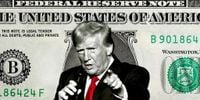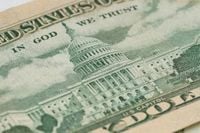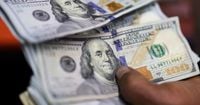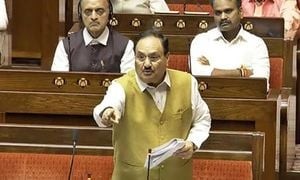In a move that has sent ripples through global markets, President Donald Trump announced on April 2, 2025, the implementation of sweeping new tariffs on imports, marking what he has dubbed "Liberation Day." These tariffs include a blanket 10% duty on most imported goods and an additional 25% tariff on imported vehicles, raising questions about the potential economic impacts both domestically and internationally.
The announcement followed weeks of speculation and threats from the Trump administration regarding trade policies, leading to heightened uncertainty among traders and investors. The U.S. Dollar Index (DXY) reacted negatively, pulling back to near the 104.00 level as traders braced for the ramifications of these tariffs. This decline in the dollar's value is surprising to many, as traditional economic models suggest that such tariffs should strengthen the dollar by making U.S. goods more expensive abroad, thus increasing demand for the dollar.
Despite these expectations, the reality has been quite different since Trump's inauguration, with the dollar weakening instead. According to a recent report, the dollar index is down about 4% this year, following a 7% gain in 2024. Analysts attribute this decline to growing concerns over the U.S. economy's outlook and the implications of Trump's erratic tariff announcements.
As the tariffs take effect, the immediate question arises: who will bear the cost? Economists typically analyze the incidence of tariffs by dividing the burden between foreign producers and domestic consumers. However, trade tariffs introduce additional complexities, such as their potential impact on currency values. Council of Economic Advisors Chair Stephen Miran discussed these implications in a November 2024 policy paper, noting that tariffs can lead to currency appreciation, although this effect is not guaranteed.
An IMF study spanning from 1963 to 2014 found that tariff increases generally resulted in real exchange rate appreciation, but the relationship is not straightforward. The dynamics of currency markets mean that while tariffs may initially strengthen the dollar, the volatility of the current tariff regime could dampen this effect. In the short term, the uncertainty surrounding the tariffs may lead to a decrease in foreign investment in the U.S., further complicating the currency appreciation scenario.
Market reactions have been mixed. The euro rose 0.6% against the dollar to $1.0852, while sterling climbed 0.4% to $1.2978 ahead of the tariff announcement. Meanwhile, the Japanese yen fell against the dollar, reflecting a broader risk-on sentiment among traders as they awaited more details about the tariffs and their potential fallout.
Traders are particularly cautious given that the Trump administration's tariff policies have often been inconsistent, with some tariffs proposed only to be quickly suspended after negotiations with foreign countries. This unpredictability makes it difficult for market participants to anticipate the long-term effects of the tariffs on currency values.
Moreover, foreign retaliation is a significant concern. The European Union is expected to revisit its own tariff measures in response to the U.S. tariffs, which could further impact U.S. exports and create a feedback loop that undermines the dollar's value. If foreign countries implement retaliatory tariffs that mirror those imposed by the U.S., the anticipated scarcity of dollars could fail to materialize, limiting potential currency appreciation.
In addition to trade dynamics, capital market turbulence could overshadow the effects of tariffs on currency values. If investors perceive the U.S. as a less attractive place to invest due to the uncertainty surrounding tariffs, the dollar may depreciate, contrary to expectations. This sentiment was echoed by Paul Mackel, global head of FX research at HSBC, who noted that fatigue has set in among investors trying to navigate the implications of U.S. tariffs.
As the market adjusts to the new tariff landscape, analysts are keeping a close eye on economic indicators. The Factory Orders report for February indicated an increase of 0.6% month-over-month, slightly above the analyst consensus of 0.5%. This data point, along with a rise in private payrolls by 155,000 in March, suggests some resilience in the U.S. economy, but concerns about the broader impact of tariffs remain prevalent.
Looking forward, the question remains: will the dollar stabilize or continue its downward trend? While some strategists predict a gradual recovery in the dollar as the market adjusts to the new tariff regime, others warn of potential erosion in the dollar's status as a safe haven. The longer-term implications of Trump's isolationist policies could lead to a gradual decline in the dollar's dominance in global markets.
As investors and traders navigate this complex landscape, it is clear that the impact of Trump's tariffs will be felt far beyond U.S. borders. The evolving dynamics of global trade and currency markets will demand close attention in the coming weeks and months.









